Sushi is a popular Japanese dish that has gained a lot of popularity in recent years. It is a dish that consists of small portions of raw fish, vegetables, and rice wrapped in seaweed. Sushi is a healthy and delicious meal that is enjoyed by many people all over the world.
If you are watching your carbohydrate intake, you may be wondering how many carbs are in sushi. The amount of carbs in sushi varies depending on the type of sushi you are eating. For example, a single piece of sushi typically contains around 8 grams of carbs. However, sushi rolls that contain rice can contain a lot more carbs.
Key Takeaways
- Sushi is a popular Japanese dish that consists of small portions of raw fish, vegetables, and rice wrapped in seaweed.
- The amount of carbs in sushi varies depending on the type of sushi you are eating.
- If you are watching your carbohydrate intake, it is important to be mindful of the type of sushi you are eating.

What is Sushi
Sushi is a Japanese dish that consists of small portions of vinegar-flavored rice, combined with various ingredients such as raw fish, vegetables, and seafood. The dish is often served with wasabi, pickled ginger, and soy sauce.
The main ingredient of sushi is rice, which is cooked with vinegar, sugar, and salt. The rice is then shaped into small portions and topped with various ingredients. Sushi can be served in different forms, such as maki, nigiri, and temaki.
Sushi is often associated with raw fish, but it can also be made with cooked seafood, vegetables, and even fruits. The ingredients used in sushi can vary depending on the region and the chef’s preference.

Types of Sushi Rolls
There are many different types of sushi rolls, each with its unique flavor and texture. Here are some of the most popular types of sushi rolls:
Maki
Maki is a type of sushi roll that is made by wrapping sushi rice and various ingredients in seaweed. The seaweed is then rolled around the filling to create a cylindrical shape. Maki sushi rolls can be filled with a variety of ingredients, such as cucumber, avocado, eel, salmon, tuna, and raw fish.
Sashimi
Sashimi is a type of sushi that is made by slicing raw fish into thin pieces. Unlike other types of sushi, sashimi does not include any rice or seaweed. It is typically served with soy sauce and wasabi.
Nigiri
Nigiri is a type of sushi that is made by placing a small amount of sushi rice on top of a piece of raw fish. The fish is typically lightly brushed with soy sauce before being served.
Tempura Roll
Tempura rolls are a type of sushi roll that is made by filling sushi rice and various ingredients in seaweed and then deep-frying the roll in a light batter. The most popular tempura roll is the shrimp tempura roll.
California Roll
The California roll is a type of sushi roll that was invented in the United States. It is made by filling sushi rice and various ingredients in seaweed, such as avocado, cucumber, and crab meat. The roll is typically served with soy sauce and wasabi.
Philadelphia Roll
The Philadelphia roll is another type of sushi roll that was invented in the United States. It is made by filling sushi rice and various ingredients in seaweed, such as smoked salmon, cream cheese, and cucumber. The roll is typically served with soy sauce and wasabi.
Tuna Roll
The tuna roll is a type of sushi roll that is made by filling sushi rice and raw tuna in seaweed. The roll is typically served with soy sauce and wasabi.
Salmon Roll
The salmon roll is a type of sushi roll that is made by filling sushi rice and raw salmon in seaweed. The roll is typically served with soy sauce and wasabi.
Avocado Roll
The avocado roll is a type of sushi roll that is made by filling sushi rice and avocado in seaweed. The roll is typically served with soy sauce and wasabi.
Rainbow Roll
The rainbow roll is a type of sushi roll that is made by filling sushi rice and various ingredients in seaweed, such as avocado, cucumber, and raw fish. The roll is typically served with soy sauce and wasabi.
Dragon Roll
The dragon roll is a type of sushi roll that is made by filling sushi rice and various ingredients in seaweed, such as eel and avocado. The roll is typically served with soy sauce and wasabi.
Spider Roll
The spider roll is a type of sushi roll that is made by filling sushi rice and deep-fried soft-shell crab in seaweed. The roll is typically served with soy sauce and wasabi.
Vegetarian Sushi
Vegetarian sushi is a type of sushi that is made with vegetables instead of fish. It can be made with a variety of vegetables, such as cucumber, avocado, and lettuce. Vegetarian sushi can be rolled in seaweed or served as hand rolls.
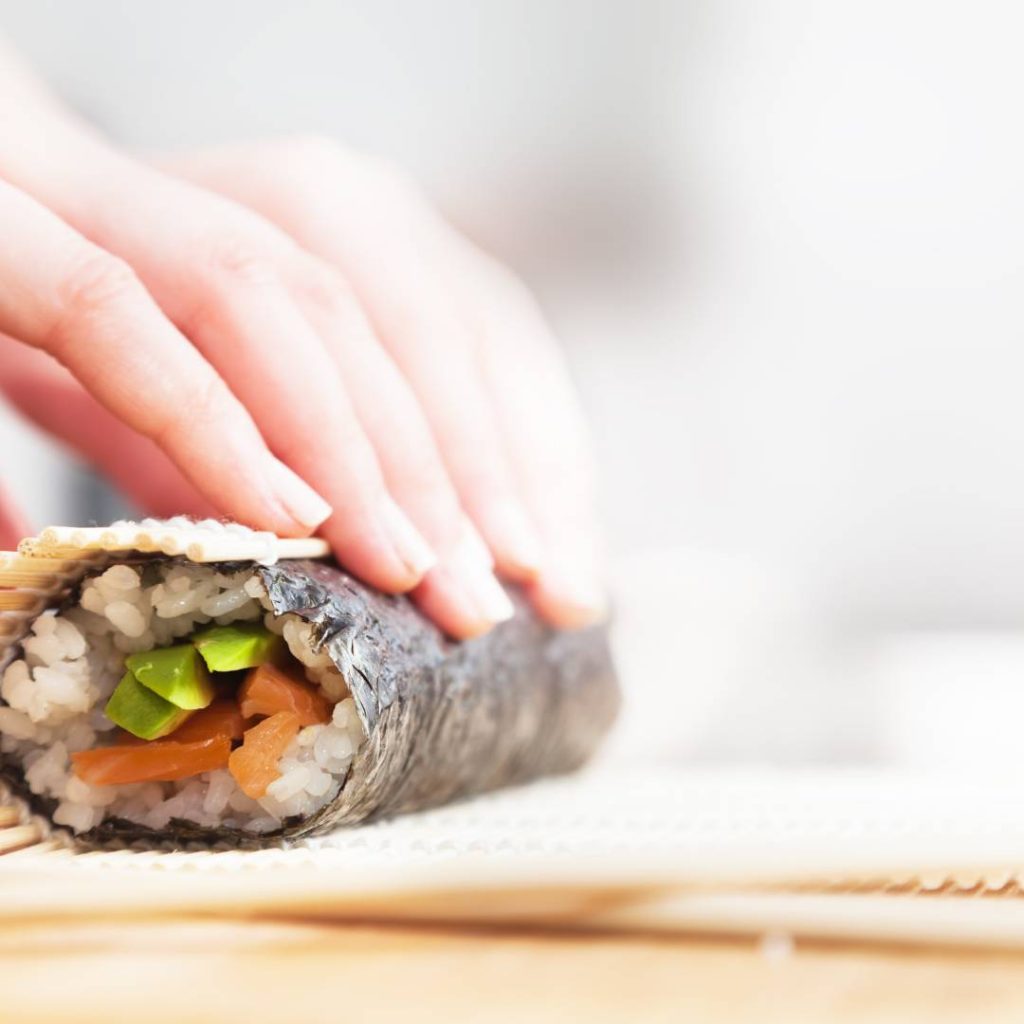
Carbohydrate Content in Sushi
While sushi is generally considered to be a healthy food choice, its carbohydrate content can vary depending on the ingredients used. Here’s a concise list of popular sushi options, their net carbs per serving, and tips to reduce carbs:
| Name | Net Carbs (g) | Tips |
|---|---|---|
| Regular Sushi | 7.57 | Opt for sashimi or brown rice. |
| California Roll | 6.11 | Choose cucumber wrap or half-rice version. |
| Philadelphia Roll | 5.80 | Request less cream cheese or cucumber wrap. |
| Sushi with Egg | 3.24 | Enjoy as is. |
| Salmon Maki Roll | 4.82 | Order sashimi-style salmon. |
| Tuna Maki Roll | 4.82 | Choose cucumber wrap or tuna sashimi. |
Rice in Sushi
The main source of carbohydrates in sushi is the rice. Traditionally, sushi rice is made with short-grain white rice that is cooked with vinegar, sugar, and salt. This gives the rice its characteristic sticky texture and tangy flavor.
One cup of cooked sushi rice contains around 45 grams of carbohydrates. However, the amount of rice used in sushi rolls is usually less than a cup, so the carb content is lower. Sushi rolls typically contain around 22-30 grams of carbs per roll, depending on the size and ingredients used.
If you’re looking to reduce your carb intake, you can opt for sushi rolls made with brown rice instead of white rice. Brown rice is a whole grain that contains more fiber and nutrients than white rice. One cup of cooked brown rice contains around 45 grams of carbs, but it also has more fiber, which can help slow down the absorption of carbs and keep you feeling full for longer.
Other Carbs in Sushi
Aside from rice, sushi rolls can also contain other sources of carbohydrates. For example, avocado, cucumber, and carrots are common sushi ingredients that contain carbs. However, these carbs are mostly in the form of fiber, which is not digested by the body and does not contribute to net carb count.
In conclusion, while sushi does contain carbohydrates, it is not a high-carb food. The carb content of sushi can vary depending on the ingredients used, but most sushi rolls contain around 3-5 grams of net carbs per roll. If you’re looking to reduce your carb intake, you can opt for sushi rolls made with brown rice or choose ingredients that are lower in carbs.
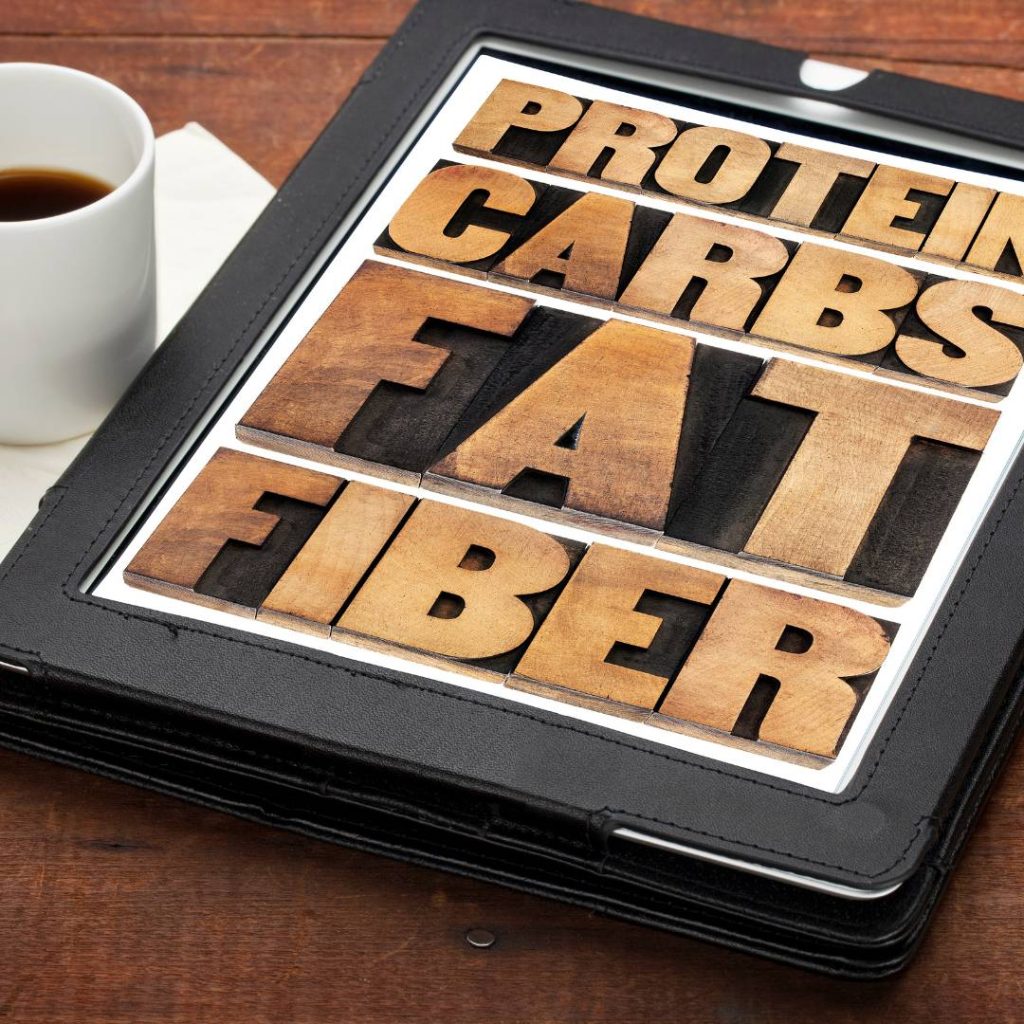
Protein, Fat, and Calorie Content in Sushi
Sushi is a low-fat, low-calorie, and high-protein meal that is typically served with soy sauce, wasabi, and pickled ginger. In this section, we will discuss the protein, fat, and calorie content in sushi.
Protein in Sushi
Sushi is a great source of protein, which is essential for building and repairing muscles, bones, and other tissues. The amount of protein in sushi varies depending on the type of fish or seafood used. For example, salmon, tuna, and shrimp are all high in protein, with each piece of sushi containing around 1-2 grams of protein. Additionally, sushi rolls that contain tofu or egg can also provide a good source of protein for vegetarians.
Fat in Sushi
Sushi is generally low in fat, making it a healthy option for those looking to maintain a balanced diet. However, some types of sushi, such as those made with fatty fish like salmon or eel, can contain higher amounts of fat. For example, a piece of salmon sushi contains around 1 gram of fat, while a piece of eel sushi contains around 3 grams of fat. It is worth noting that the fat in sushi is mostly unsaturated, which is considered to be the healthier type of fat.
Calories in Sushi
Sushi is a relatively low-calorie food, with each piece of sushi containing around 40-60 calories on average. However, the calorie content can vary depending on the type of sushi and the ingredients used. For example, sushi rolls that contain avocado or cream cheese can be higher in calories due to their fat content. It is also important to note that the rice used in sushi contains carbohydrates, which can contribute to the overall calorie content.
Additional Nutritional Values
Sushi not only provides a delicious taste but also offers various nutritional benefits. Here are some additional nutritional values of sushi:
Sugar in Sushi
Sushi contains a small amount of sugar. According to FatSecret, one piece of sushi contains approximately 1.63g of sugar. However, the sugar content may vary depending on the type of sushi and the ingredients used.
Fiber in Sushi
Sushi is a good source of fiber. One piece of sushi contains around 0.2g of fiber, which is essential for maintaining digestive health. Some types of sushi, such as those made with brown rice, may contain higher amounts of fiber.
Sodium in Sushi
Sushi can be high in sodium, which is a concern for people with high blood pressure. According to FatSecret, one piece of sushi contains approximately 155mg of sodium. However, the sodium content may vary depending on the type of sushi and the ingredients used.
Vitamins in Sushi
Sushi is a good source of various vitamins, including vitamin A, vitamin C, and vitamin E. These vitamins are essential for maintaining good health and boosting the immune system. The fish used in sushi is also a good source of vitamin D, which is essential for maintaining strong bones.
Minerals in Sushi
Sushi is rich in minerals such as calcium, iron, and potassium. These minerals are essential for maintaining healthy bones, blood, and muscles. The seaweed used in sushi is also a good source of iodine, which is essential for maintaining a healthy thyroid gland.

Health Benefits and Concerns of Eating Sushi
Benefits of Eating Sushi
Sushi is often considered a healthy food choice because of the nutrient-rich ingredients it contains. Here are some potential benefits of eating sushi:
- Nutrient-rich ingredients: Sushi is often made with fish, which is a good source of protein, iodine, and multiple vitamins and minerals. Seaweed, which is used to wrap sushi rolls, is also a good source of vitamins and minerals, including iodine, calcium, and iron.
- Omega-3 fatty acids: Fish used in sushi, such as salmon and tuna, are rich in omega-3 fatty acids. These healthy fats can help reduce inflammation and lower the risk of heart disease.
- Low in calories: Sushi rolls are generally low in calories, making them a good option for those who are trying to lose weight or maintain a healthy weight.
- Low in saturated fat: Sushi is generally low in saturated fat, which is a type of fat that can increase the risk of heart disease.
Concerns and Precautions
While sushi can be a healthy food choice, there are also some concerns and precautions that you should be aware of. Here are some potential concerns:
- Mercury: Some types of fish used in sushi, such as tuna, can contain high levels of mercury. Mercury can be harmful to your health, especially if you consume too much of it. Pregnant women and young children are advised to limit their consumption of fish that are high in mercury.
- Raw fish: Some types of sushi, such as sashimi, are made with raw fish. Raw fish can contain bacteria and parasites that can make you sick. Make sure to only eat sushi that has been prepared properly and stored at the correct temperature.
- Sodium: Some types of sushi, such as soy sauce, can be high in sodium. Consuming too much sodium can increase your risk of high blood pressure and heart disease.
- Allergies: Sushi can contain ingredients that some people may be allergic to, such as shellfish or soy. Make sure to inform your server of any food allergies you may have.
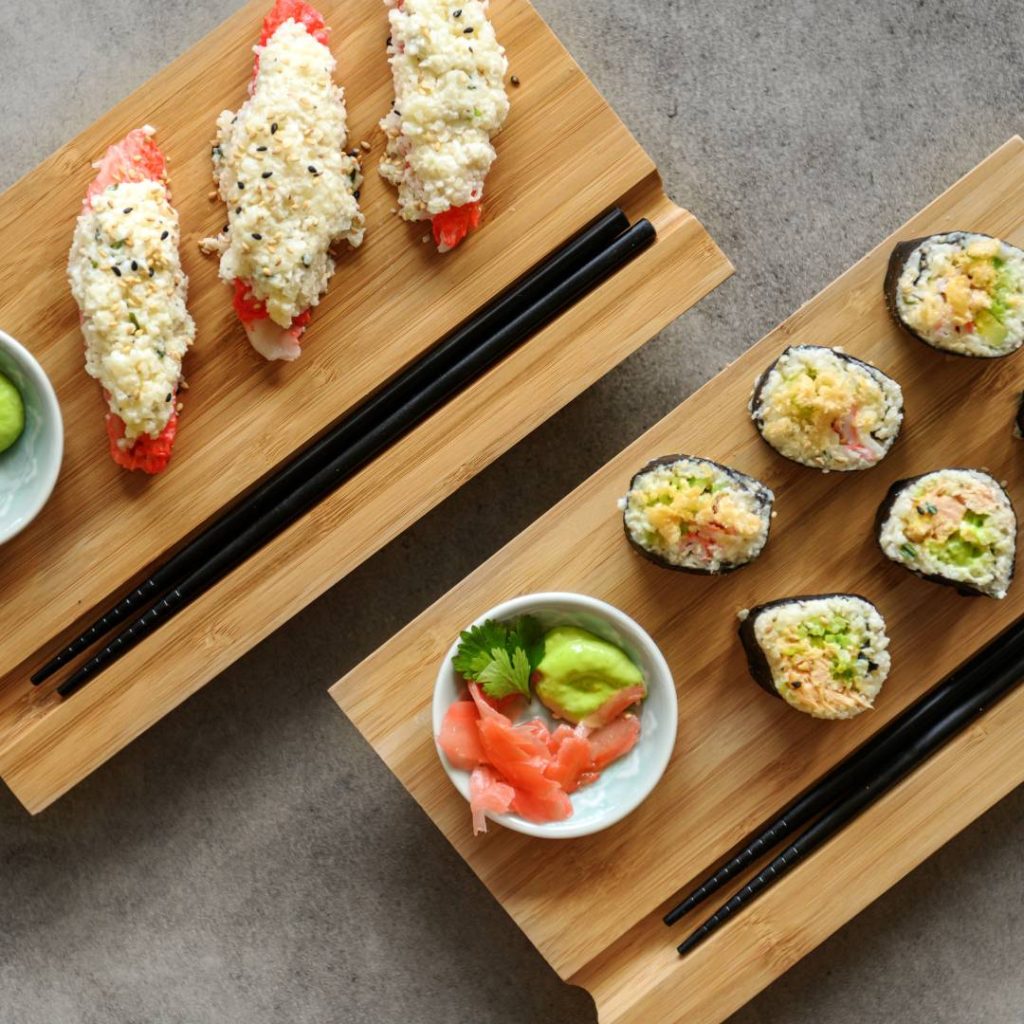
Sushi and Specific Diets
Sushi is a popular Japanese dish that typically includes rice, vegetables, and seafood. However, it can also be made with different ingredients for those following specific diets. Here are some options for sushi lovers looking for alternatives that fit their dietary needs.
Sushi in a Keto Diet
If you’re following a keto diet, you may be wondering if you can still enjoy sushi. The good news is that there are keto-friendly sushi options available. One option is to order sushi rolls without rice, which reduces the carb content significantly. Another option is to use cauliflower rice as a substitute for regular rice. Keto-friendly sushi ingredients include seafood, avocado, cucumber, and other low-carb vegetables.
Vegan and Vegetarian Sushi
For those following a vegan or vegetarian diet, sushi can still be a delicious option. Vegetable sushi rolls are a great alternative to traditional sushi rolls. These rolls can include ingredients such as avocado, cucumber, carrots, and bell peppers. Another option is to use tofu or tempeh as a protein source. Some sushi restaurants also offer vegan or vegetarian sushi options that are made with plant-based ingredients.
Low-Calorie Sushi Options
If you’re looking for a healthier sushi option, there are several low-calorie sushi options available. Sushi pieces that include fish or seafood are generally lower in calories than those made with meat. Sushi with egg is also a low-calorie option. Additionally, sushi with vegetables can be a great option for those looking to reduce their calorie intake. Some popular vegetable options include cucumber, avocado, and asparagus.
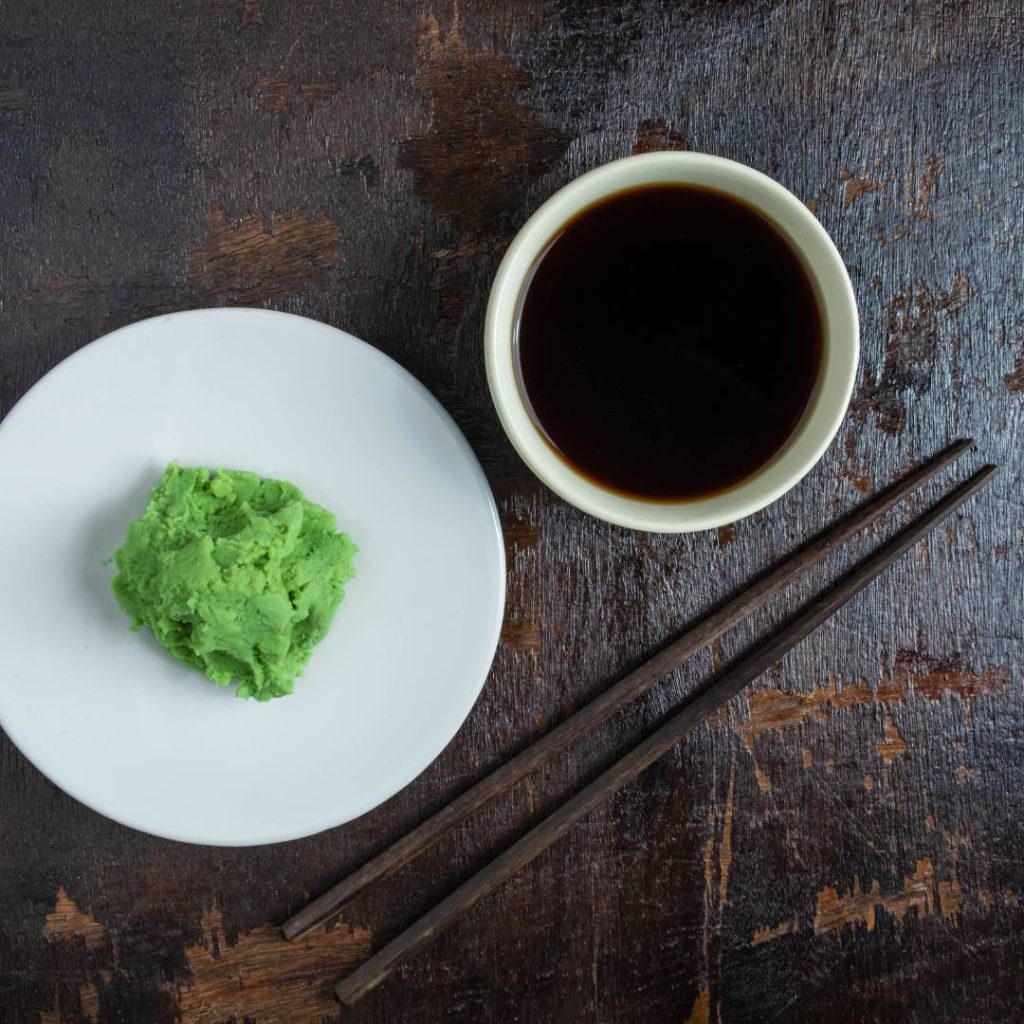
Popular Sushi Condiments
Sushi is often served with a variety of condiments that can enhance its flavor. Here are some of the most popular sushi condiments:
Soy Sauce
Soy sauce is a common condiment served with sushi. It is made from fermented soybeans, wheat, salt, and water. Soy sauce adds a salty flavor to sushi and is often used to dip sushi rolls. However, soy sauce can be high in sodium, so it is important to use it in moderation.
Wasabi
Wasabi is a green paste that is often served with sushi. It is made from the root of the wasabi plant and has a spicy, pungent flavor. Wasabi is often mixed with soy sauce to create a dipping sauce for sushi. It is also used as a condiment to add flavor to sushi rolls.
Pickled Ginger
Pickled ginger, also known as gari, is a sweet and sour condiment made from thinly sliced ginger that has been pickled in vinegar and sugar. It is often served with sushi to cleanse the palate between bites. Pickled ginger is also believed to aid in digestion.
Spicy Mayo
Spicy mayo is a popular condiment in American-style sushi rolls. It is made from mayonnaise and hot sauce, such as sriracha or chili paste. Spicy mayo adds a creamy, spicy flavor to sushi rolls.
Horseradish
Horseradish, also known as wasabi-zuke, is a pickled condiment made from horseradish root. It has a strong, pungent flavor and is often served with sushi to add a spicy kick. Horseradish is also believed to have health benefits, such as boosting the immune system and aiding in digestion.
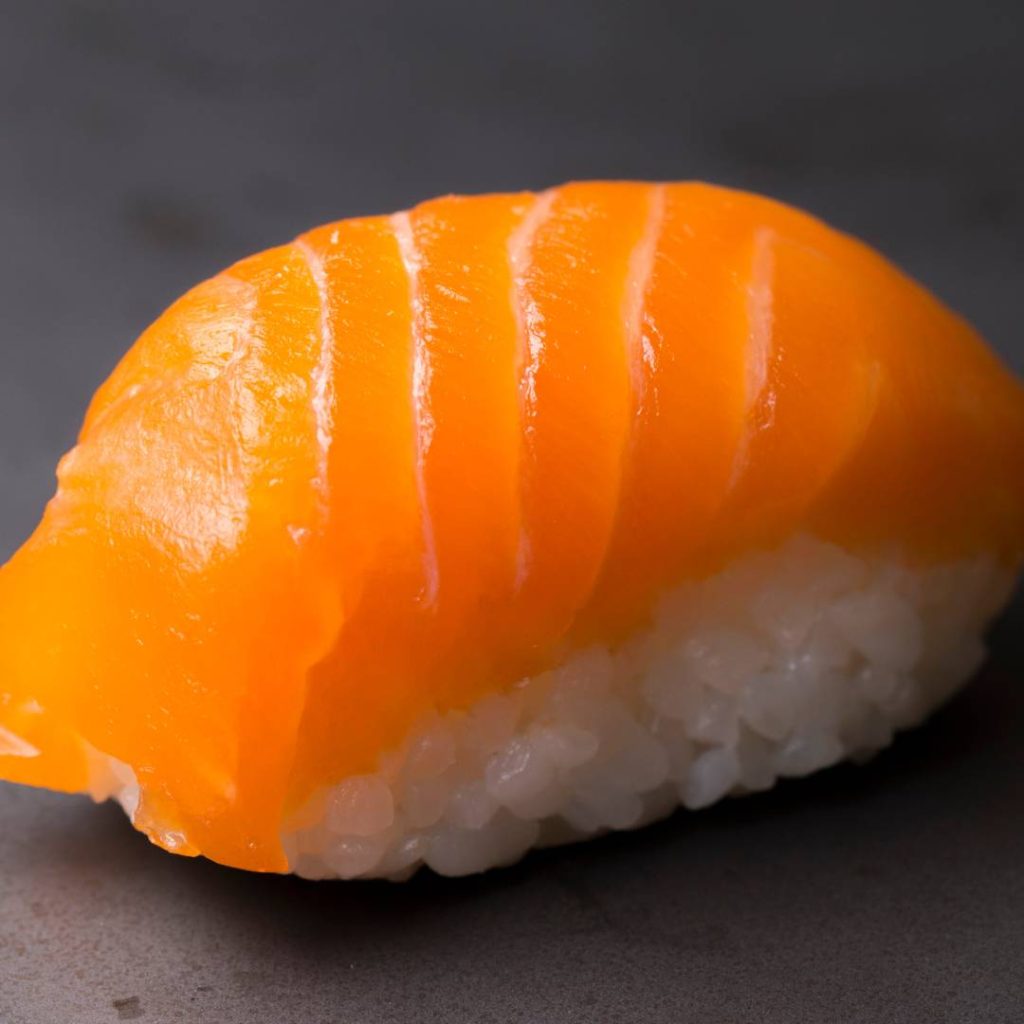
Common Sushi Ingredients
Here are some of the most common ingredients found in sushi:
Cream Cheese
Cream cheese is a common ingredient in sushi rolls, especially in American-style sushi. It is often used to add a creamy texture and flavor to the rolls. However, cream cheese is high in calories and fat, so it is important to consume it in moderation.
Mayonnaise
Mayonnaise is another common ingredient in American-style sushi rolls. It is often used as a condiment or mixed with other ingredients to add flavor and creaminess. However, mayonnaise is high in calories and fat, so it should be consumed in moderation.
Sesame Seeds
Sesame seeds are a popular ingredient in sushi rolls. They are often sprinkled on top of rolls or mixed with other ingredients to add flavor and texture. Sesame seeds are a good source of healthy fats, protein, and fiber.
Raw Tuna
Raw tuna is a common ingredient in sushi rolls. It is a good source of protein, omega-3 fatty acids, and other nutrients. However, raw tuna may also contain high levels of mercury, so it should be consumed in moderation.
Salmon Sashimi
Salmon sashimi is another popular ingredient in sushi. It is a good source of protein, omega-3 fatty acids, and other nutrients. However, like raw tuna, salmon may also contain high levels of mercury, so it should be consumed in moderation.
Tilapia
Tilapia is a common ingredient in sushi rolls. It is a good source of protein and other nutrients. However, tilapia may also contain high levels of contaminants, so it should be consumed in moderation.
Octopus
Octopus is a popular ingredient in sushi rolls. It is a good source of protein and other nutrients. However, the octopus may also contain high levels of cholesterol, so it should be consumed in moderation.
Imitation Crab
Imitation crab is a common ingredient in sushi rolls. It is made from fish that has been processed and flavored to resemble crab meat. Imitation crab is a good source of protein, but it may also contain high levels of sodium and other additives.



Konnichiwa! (Hello!) I'm Pat Tokuyama, a Japanese tofu cookbook author, who travels for music, food, and adventure. If you like Japanese tea, checkout some of the newestorganic japanese tea, matcha bowls and noren and more!
** Curious about the Plant Based Japanese Cooking Club? ** Learn more here!
Wraps
Sushi rolls are often wrapped in seaweed, known as nori. However, other types of wraps may also be used, such as soy paper or cucumber. Nori is a good source of iodine and other nutrients, while soy paper and cucumber are low in calories and carbohydrates.
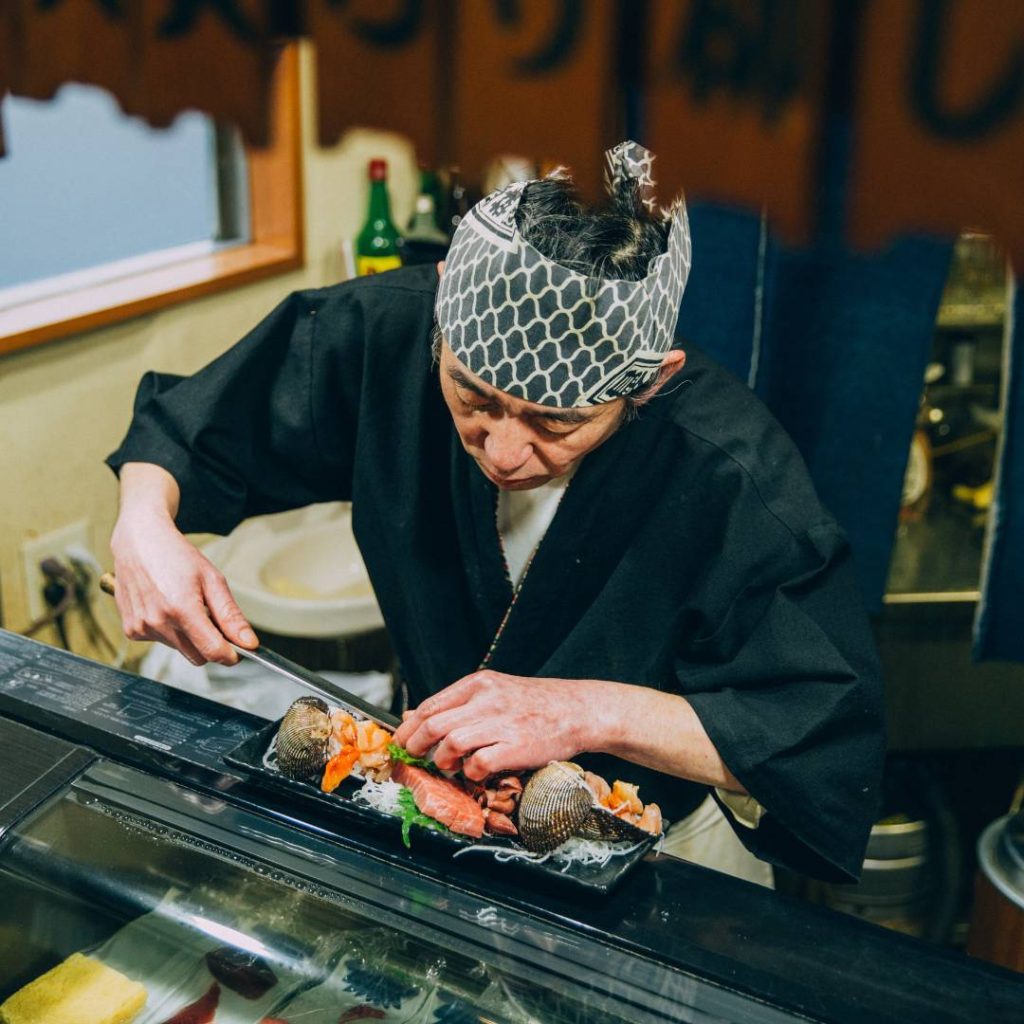
Ordering Sushi at a Restaurant
If you’re on a low-carb or keto diet, you may be wondering if sushi is a good dining option. When dining at a Japanese restaurant, there are a few things to keep in mind when ordering sushi. First, it’s important to avoid any rolls that contain rice, such as California rolls, spider rolls, and dragon rolls. These rolls can contain up to 50 grams of carbs per serving, which can quickly add up and exceed your daily carb limit.
Instead, opt for sushi rolls that are made without rice. These are typically called “naruto” or “sashimi” rolls. They are made by wrapping the fish and vegetables in cucumber or thinly sliced daikon radish. These rolls are low in carbs and high in flavor, making them a great option for those on a low-carb or keto diet.
If you’re not a fan of raw fish, you can also order cooked sushi rolls. These rolls typically contain cooked fish or vegetables and are lower in carbs than their raw counterparts. Examples of cooked sushi rolls include tempura rolls, eel rolls, and shrimp rolls.
When ordering sushi, it’s also important to ask the chef to leave out any sauces or toppings that may be high in carbs. Some common high-carb sauces include eel sauce, teriyaki sauce, and spicy mayo. Instead, ask for your rolls to be served with wasabi and soy sauce on the side.
In conclusion, while sushi can be high in carbs, there are ways to enjoy it while staying within your carb limit. By ordering sushi rolls without rice, opting for cooked rolls, and asking for sauces on the side, you can enjoy a delicious and satisfying meal at a Japanese restaurant without derailing your diet.


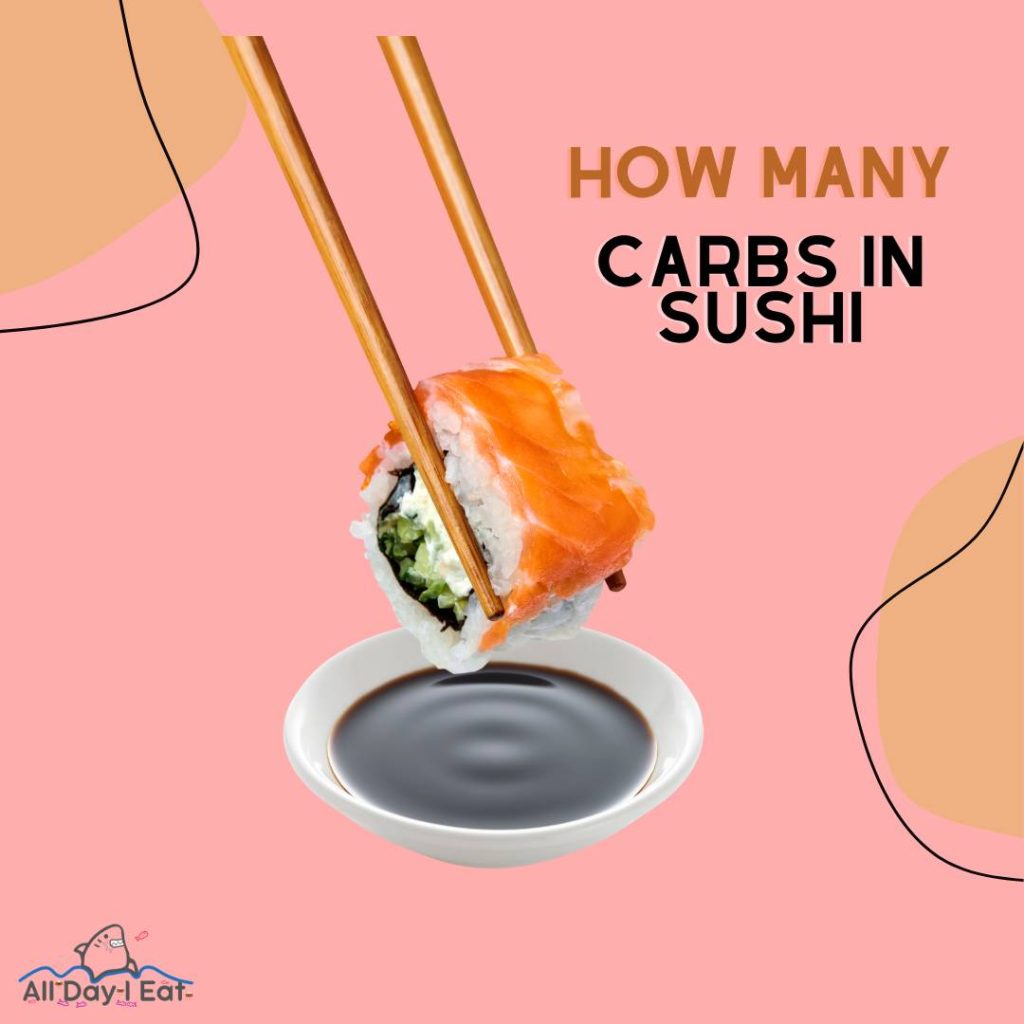





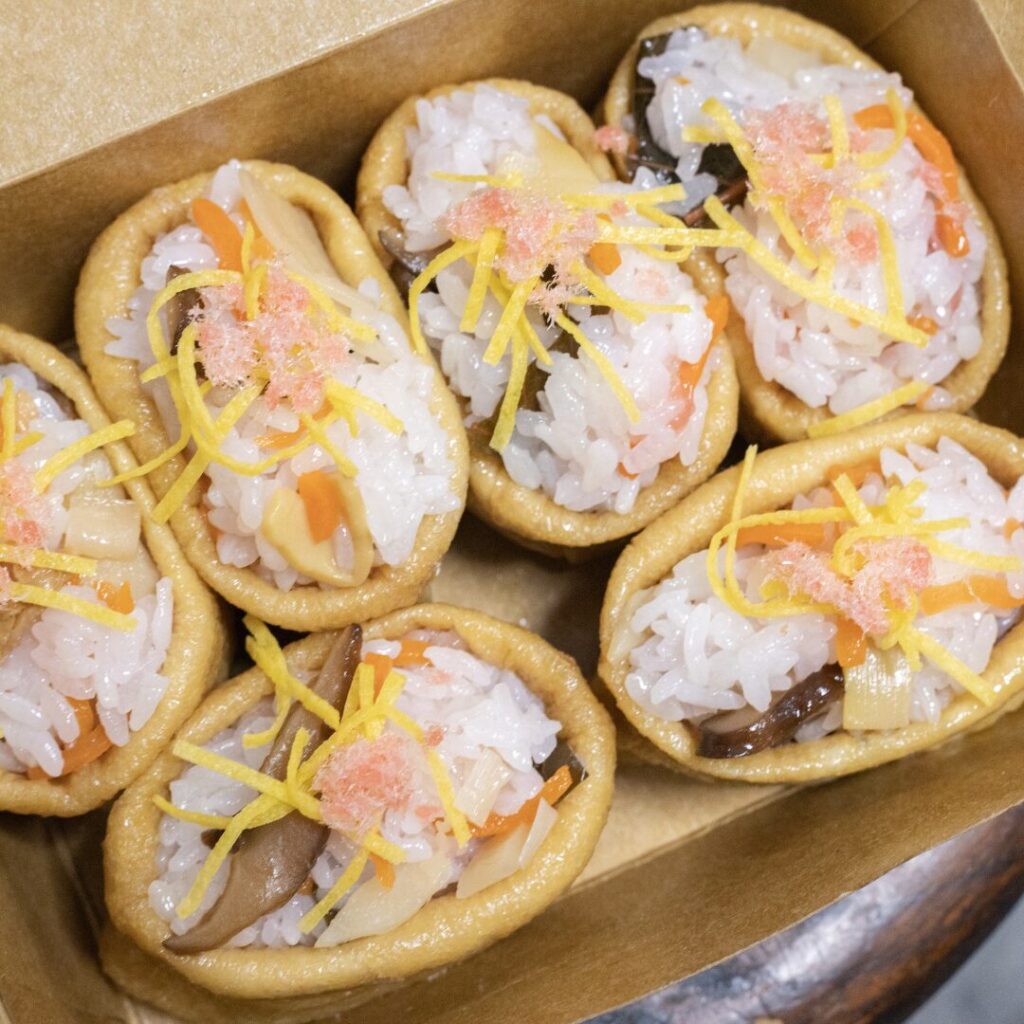


Konnichiwa! (Hello!) I'm Pat Tokuyama, a Japanese tofu cookbook author, who travels for music, food, and adventure. If you like Japanese tea, checkout some of the newestorganic japanese tea, matcha bowls and noren and more!
** Curious about the Plant Based Japanese Cooking Club? ** Learn more here!